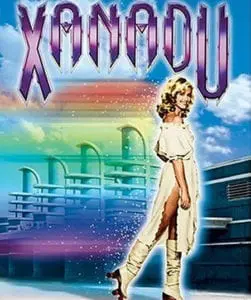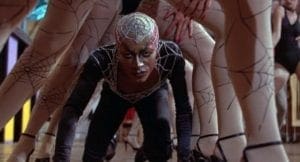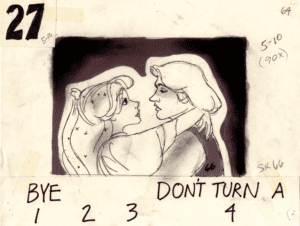Xanadu
"A fantasy. A musical. A place where dreams come true."
(1980)
starring Olivia Newton-John, Gene Kelly, and Michael Beck
PODCAST:
'80s Movies: A Guide to What's Wrong with Your Parents -
XANADU: Making Men's Dreams Come True
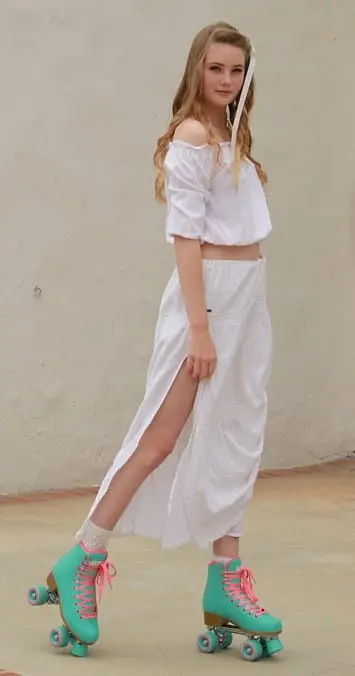
A struggling artist falls in love with a mysterious young woman who guides him to success.
Why it’s rad:
One of the best “so bad it’s good” movies. It’s terrible, but there’s something about it that’s so captivating, so enjoyable, so ‘80s, and so wonderful, that one can’t help but love it. We have to believe that it’s magic.
The amazing soundtrack was a hit machine consisting of music almost exclusively by ELO or Olivia Newton-John.
The film has an unusual innocence for the time.
Olivia Newton-John is positively ethereal in her follow up to Grease.
Gene Kelly's final film. His dance moves are effortless and the 67-year-old roller skates with ease!
Music, dance, and style from the ‘80s and the ‘40s are interwoven.
Legwarmers! Xanadu is how a dancer's functional accessory became a hot fashion trend.
So '80s:

An '80s time capsule. If there's one film to identify Los Angeles in 1980, this one transports you straight back. The glam rock look, the colorful craziness, the long shaggy locks, the shorty man shorts, the feathered hair, the Western look, the diversity of the dancers, and of course...
Roller skating. Xanadu was born of the idea that the roller skating craze that first overtook Venice Beach and then all of America should be the backdrop in a film. The idea that people would roller skate as an actual method of transportation seems wacky today, but Sonny and Kira do roll up and down the SoCal coast, from Malibu to Venice all the way over to Mid-City on Wilshire Blvd. where the Pan Pacific Auditorium stood.
Pop-lockers. It wasn't yet called break dancing, but the pop-locking dance style mixed with the Solid Gold dance moves were an organized version of what was going on in clubs.
The roller disco. When the film was made in 1979, roller discos were en vogue. However, by 1980 – the time of the movie’s release – they were already becoming passe. The fad was over, and the movie flopped.
High concept night clubs. As shown in the movie Thank God It's Friday and Can't Stop the Music, clubs like Osko's and Studio 54 were all the rage. Osko's had four floors and multiple themed clubs within the building.
What’s your damage?

Xanadu is a PG film that is completely appropriate for kids: no language, no sexuality, no violence. Celebrating with champagne is about as "bad" as it gets. But, that doesn't mean there isn't a message in it with the potential to affect young, impressionable audiences.
Kira exists to make MEN'S dreams come true. In the 1980s, women started to enter the workforce in significant numbers. However, as Nine to Five reflects, it was often in a support role. They worked to make their male bosses look good. Kira helps two men, first Danny and then Sonny, find a successful outlet for their musical and creative desires. But, what does Kira want? For starters, no one cares. Sonny and Danny never ask her what she wants. And, initially, even Kira's parents don't care. Finally, she makes it clear she would give up her sisters, her family, and her purpose just to be with a man. And, little girls everywhere were taught that true love means giving up your own hopes and dreams for his.
Xanadu was more New Age than it let on. The "law of attraction" is a school of thought that came to mainstream attention in the late 2000s after the book "The Secret" became a best seller. Additionally, "The Power of Now" gave another perspective on that voice in our head. Xanadu seems to address both, to some degree, particularly in the song, "Magic." "We have to believe we are magic, nothing can stand in our way...don't let your mind ever stray." Magical thinking and our inner guide came alive on 8/8/1980.
Behind the Scenes
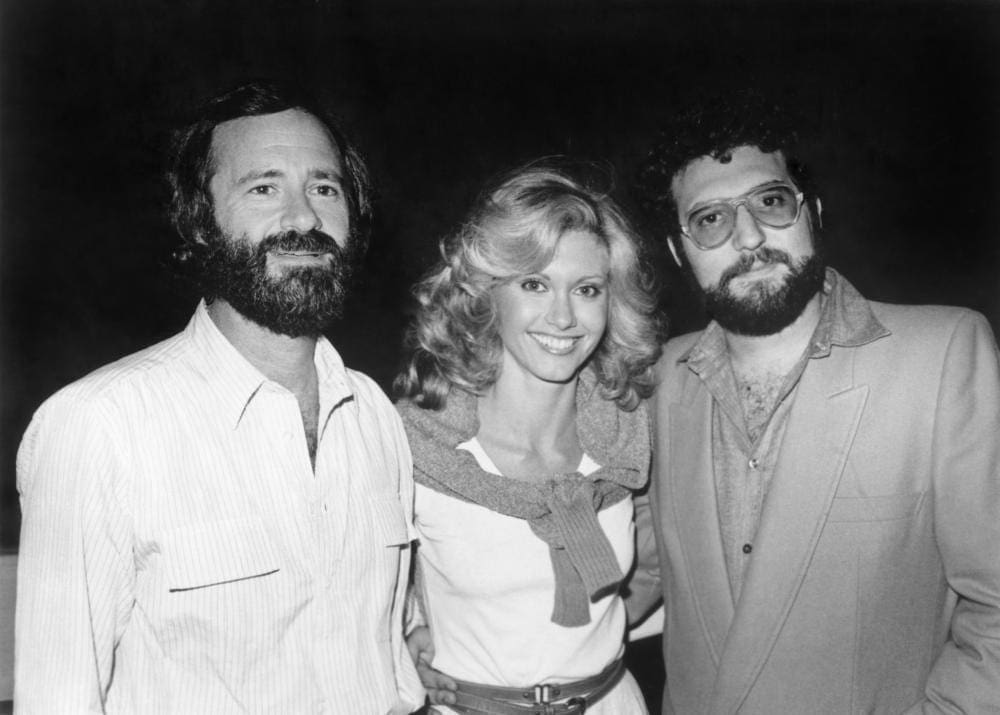
GETTING THE GREENLIGHT
Brian Grazer was the impetus for Xanadu. The future uber-producer had a couple of TV movies under his belt at the time. Grazer conceived the idea for a roller skating film to reflect the Venice Beach trend. He bugged his friend Marc Reid Rubel to write it. They took the pitch to Grazer’s friend Joel Silver (pictured right, who was then an assistant to producer Lawrence Gordon, pictured left) and the three of them hammered out the concept.
Rubel based Sonny on two of his friends:. One was artist who painted album covers for Tower Records. The other was a roadie who had a crush on a “major rock star’s girlfriend.” The artist friend actually did paint the album cover work we see as Sonny’s.
Joel Silver then pitched his boss, Lawrence Gordon, who thought it was on trend. Gordon said he could see how it was a saleable film with hit potential. “Xanadu was made to take advantage of the roller disco craze that was going through the country and the movie,” Gordon said.
Despite Gordon’s relationship at Warner Brothers, the studio passed. Initially, there appears there was interest and the group developed the concept for the studio. Eventually, Warners rejected it. “Maybe they were right to do so,” Gordon wrote later. “A musical fantasy was chancy, and at that time, we didn’t have Olivia or Gene Kelly, the eventual stars. But Joel and I still believed in the project.”
Joel Silver was hired then as an executive at Universal Pictures. He brought Xanadu with him, famously saying, “I’d stab myself in the back” to get it made. With Larry Gordon, to produce, they were in business.
The greenlight was a good news-bad news situation, especially for Marc Rubel. Rubel got the call from Gordon, who told him the good news was that Universal was going to make the picture; the bad news was that the script would be rewritten without Rubel. That condition turned out to be perilous for the film and would negatively affect the careers of most of the key players.
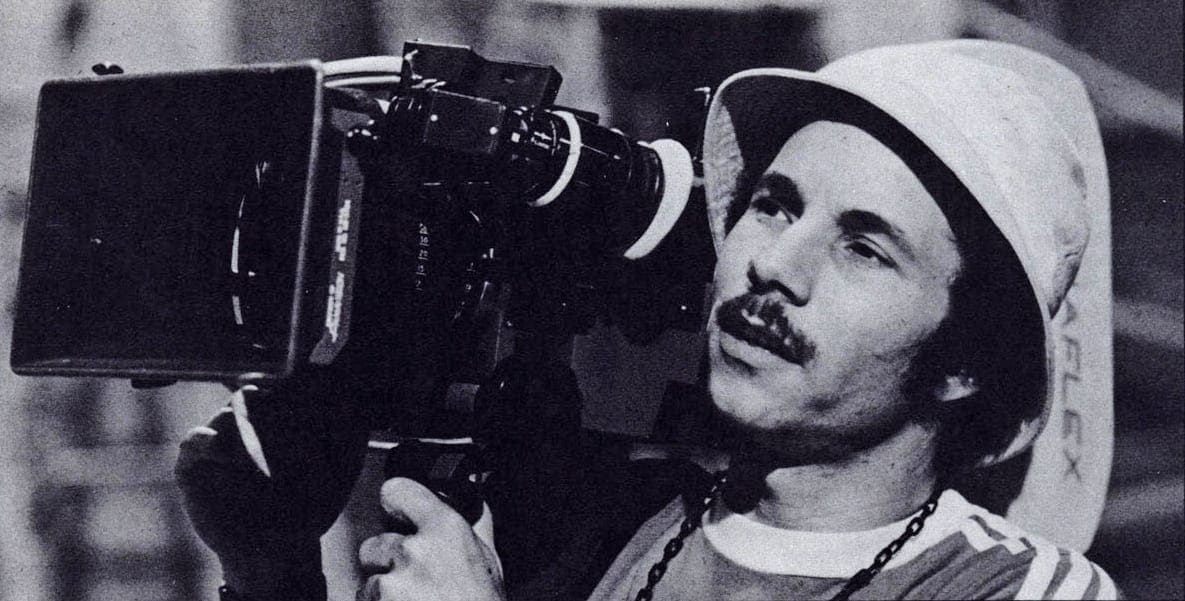
ROBERT GREENWALD, DIRECTOR
Robert Greenwald was hired away from another roller disco movie in development. The filmmakers were working to beat the clock and get their roller disco movie out before others that were in the works. Larry Gordon said he hired Greenwald to “get a jump” on the other productions, speed up theirs, slow down another.
Greenwald had musicals in his blood. Greenwald’s uncle was choreographer Michael Kidd, best known for designing the dances of Seven Brides for Seven Brothers, so the thinking was that the director was a natural choice.
However, Greenwald may not have been perfectly suited to direct a big budget romantic musical fantasy. His history was producing and directing the “Portrait Of” made-for-TV movies, which were Lifetime Movies-esque. The dramas would tell the downfall of characters (mostly women) who are living lives society disapproves of and showing how they got there -- kind of empathetic and yet judgmental. Greenwald's productions were "Kate: Portrait of a Stripper" (starring Lesley Anne Warren), "Katie: Portrait of a Centerfold" (starring Kim Basinger) and "Sharon: Portrait of a Mistress."
Additionally, Greenwald didn’t like musicals and was in the midst of an romantic crisis. Olivia Newton-John said in an interview with the BBC that her first clue the film might be in trouble was when she learned her non-fiction leaning director wasn't a fan of the musical genre, wasn't apt to like fantasies, and was going through a divorce. So, why then did Greenwald take the job? He said that Xanadu came at “a time in my own life when retreating into a fantasy world was a highly desirable and necessary thing for me.”

OLIVIA NEWTON-JOHN
The singer turned actress was deliberating between Xanadu and Can’t Stop the Music. In the year following the success of Grease, Newton-John was offered plenty of scripts, but she came down to two with a musical edge. Can't Stop the Music was a character in an ensemble film about The Village People. Xanadu she'd be the star. Xanadu was the obvious choice. (Her refusal cost her the relationship with Grease producer Allan Carr. The Can't Stop the Music role went to Valerie Perrine.)
The singer was only given a 20-page outline, but liked that the concept embodied her beliefs and principles. In her autobiography “Don’t Stop Believin’,” she wrote, “It did sound fresh, entertaining, and intriguing. I also liked that Xanadu would take audiences into a mesmerizing fantasy world, and I appreciated that there was no violence in it. More than anything, I identified with the message about dreams coming true.”
With the countrypolitan star signing on to the roller disco pic, the “disco” element was scrapped. Newton-John was the Taylor Swift of her time, starting in the country music market and transitioning over to pop. Disco was never her scene.
Lee Kramer became an executive producer. Kramer was Newton-John’s manager and boyfriend. Part of her deal was that he would be an executive producer of the film. This is still common, but now, the star usually gets an EP credit as well. Unlike in TV, an executive producer in film usually has a key role in getting the film made – perhaps securing a star or financing -- but doesn’t always do much more than that.
GENE KELLY
The producers of the film got Gene Kelly to agree to the part by wearing him down. Lawrence Gordon said he finally got Kelly to agree to the part after an intense meeting that lasted hours at the legendary dancer’s house.
Kelly said yes because filming was near his house. The dancer went into a sort of retirement after the death of his wife, Jeanne Coyne, in 1973. He wanted to focus on his family. But, knowing that the work would be minimal and a short drive away from his Beverly Hills house, he said yes. On two conditions…
Kelly refused to dance. Convincing Gene Kelly to do the film wasn’t easy, but right after he agreed to be in the musical he stipulated that he wouldn’t "touch one toe."
He insisted on approving the choreographer. Even though he wasn’t going to dance, he had to approve the film’s choreographer who had already been hired, Kenny Ortega – a new to the scene choreographer who was known for his relationships in the San Francisco arts community. Director Robert Greenwald felt sure that Kelly would eventually be convinced to dance – and was, based on Ortega’s quick thinking (see Kenny Ortega section below).
The tap-dancing sequence was actually directed by Gene Kelly. The film was already complete but, according to Kelly’s widow Pat Kelly, when they took it out for press junket, “what everyone wanted that was not in the movie was a number with Gene and Olivia.” Kelly’s contract was complete and he was set against coming back to shoot a new scene. He agreed on the condition he’d direct it.
The film’s director was banned from the set the day of the tap-dance scene. To ensure no interference in his directorial vision, Kelly only allowed six people to be present, including himself and Newton-John: Kenny Ortega, the director of photography, sound guy, and lighting person. Robert Greenwald was not allowed to be on the closed sound stage.
Kelly thought the film had all the elements to be amazing. “Gene thought the idea was marvelous,” said Kelly’s widow, Patricia. “It was the blending of the old-fashioned musical with fantasy, but it just didn’t come off, he said.”
A 67-year-old roller skating?? And you don’t show all of it?? Not only does Gene Kelly effortlessly dance throughout the film at his senior age, he roller skates with equal ease. He told Newton-John that he had been roller (and ice!) skating since he was a kid and had always loved it. Kelly’s widow, Pat, said the dancer was annoyed that they “cut his legs off” – you’ve got a 67-year-old man doing all his own roller skating and they show him from the waist up during most of the scene!

CASTING MICHAEL BECK.
With two megastars in place, the question remained who would complete the trio.
Andy Gibb. The brother of The Bee-Gees had a massive music career of his own and was the heartthrob of the late 1970s. However, the worry was that having two professional singers who were light on acting skills could be a mistake.
Mel Gibson. Olivia Newton-John had recommended a fellow Aussie, then unknown actor Mel Gibson. Her suggestion got no traction.
David Naughton. Naughton was the lead in the popular “Be a Pepper” Dr. Pepper commercials. More relevant, though, he was on the TV miniseries “Makin’ It,” a knockoff of Saturday Night Fever; he recorded the disco theme song (also called “Makin’ It”) that was a hit.
Larry Gordon and Joel Silver were impressed with an actor from their last film. Michael Beck starred in Gordon and Silver's previous collaboration, The Warriors. Beck had classical acting training, which they thought would help balance Newton-John’s lack of acting experience.
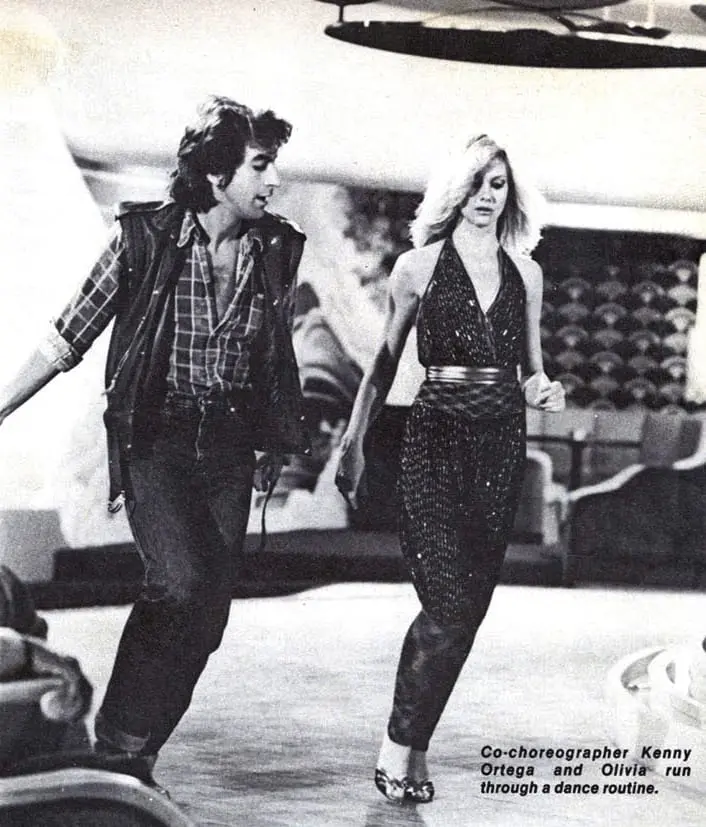
CHOREOGRAPHER KENNY ORTEGA
Kenny Ortega was a San Francisco dancer doing choreography for The Tubes. This is how The Tubes appears in Xanadu as the ‘80s rock band performing "Dancin'."
Xanadu was a big break when Ortega was given the gig. An even bigger break as things developed. Xanadu began as a low-budget roller disco movie – no real stars were envisioned. “I went to bed one night thinking I was doing a roller skating disco movie, and woke up with the biggest female star in music and then suddenly, the icon of motion picture musicals, and truly going, ‘I don’t know how to do this!’” Ortega said in the documentary "Going Back to Xanadu."
Kenny Ortega had to prove to Gene Kelly he wouldn’t embarrass the dancer -- and it changed the trajectory of his life. Kelly agreed to star in the musical with the stipulation he wouldn’t dance. His other stipulation was that he had to approve the choreographer (assumably creating moves for everyone but him). When Ortega met Kelly, the dancing icon asked what WOULD he choregraph for him, if he were going to dance, which of course, he wouldn’t. Ortega said he wasn’t prepared for the question, but as a fan of Kelly’s, he suggested he’d include some of steps Kelly created – and demonstrated them. Kelly watched and eventually got up and started dancing with Ortega. There, they began to choreograph Xanadu. And, Kelly reversed his decision and decided to dance in the film.
The club scene was straight from Ortega’s Rolodex. Ortega came out of the San Francisco Arts scene – so the juggler, the tightrope walker, and the aerialist, the pop lockers – those were all folks Ortega knew.
Ortega recommended The Tubes for the '80s dance scene because of the vibe being both timely and futuristic. “I felt the Tubes were the ultimate underground, happening rock and roll band – ahead of their time,” he said.
Xanadu launched the careers of many of the dancers.
· Assistant choreographer Russell Clark. Clark is the black dancer who crawls like a spider under the legs of the dancers during the dressing room makeover montage. When hired to do Xanadu, Clark’s only film work was the “fairy tales” porno, Cinderella (you don’t want to know).
· Sandahl Bergman went on to be in Conan the Barbarian and later became famous as a fitness instructor.
· Miranda Garrison became known as a dancer in the film industry. She was hired as assistant choreographer on Dirty Dancing, only to be promoted to the memorable role of Vivian Pressman. She's know a busy sought-after choreographer for film and TV.
· Tony Selznick. Tony's website states he is a "scion of the legendary Hollywood Selznick family." Xanadu was Tony Selznick's first job as a dancer, hired by his dancing teach and mentor Russell Clark. Tony went on to found a talent agency representing dancers and choreographers, MSA. Kenny Ortega is a client and is his brother, Albie.
· Albie Selznick. Albie is the guy on the tight rope as well as one of the jugglers in the club finale. He's known as a dancer and actor.
Ortega added diversity that was rare on film. The muses are ethnically diverse. Famous Xanadu superfan-dancer Ken Anderson said, “I remember there was this feeling that the ’80s were going to be very different from the ’70s, and the movie had the feeling that there were going to be all these different races and generations and music mixing together. … Now it seems very naive, but there really was something euphoric about it.”
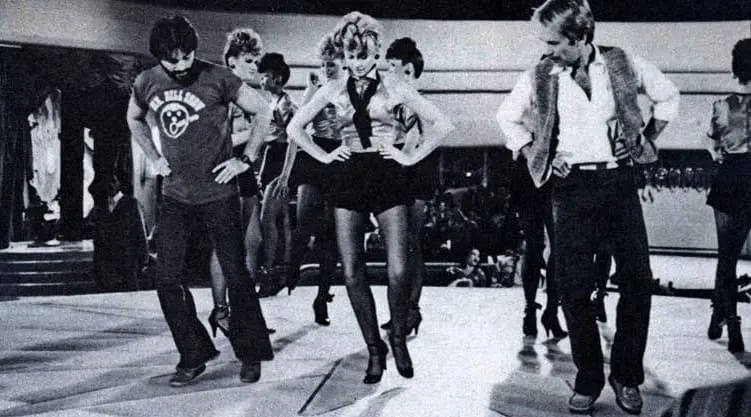
CHOREOGRAPHER JERRY TRENT
Jerry Trent also had a connection to Michael Kidd. Trent was a protegee of choreographer-dancer-actor Michael Kidd, best known for creating the footwork for Seven Brides for Seven Brothers and Guys and Dolls (as well as co-starring with Gene Kelly and Cyd Charise in It’s Always Fair Weather). Kidd’s nephew was Robert Greenwald who needed someone to teach Olivia Newton-John how to tap dance.
A five-week teaching assignment turned into five months and a big promotion. Once Gene Kelly was put into place, the film went into hyperdrive. Jerry Trent said he was originally just supposed to teach the singer how to dance and wound up choreographing six dance numbers.
Kenny Ortega is the recognized choreographer for Xanadu, but Jerry Trent was his equal on the shoot. Trent mostly worked with Olivia Newton-John, including choreographing the “Suddenly” dance number in the movie studio and the final dance number. Ortega mostly worked with Gene Kelly.
Someone else was brought in to teach Olivia Newton-John to roller skate. That was a mistake. A skate racer was hired to teach the star to roller skate. However, Jerry Trent realized that the instructor was teaching her to skate in a a crouched, hunched over form. Trent realized the guy had to go, but Newton-John didn’t want to fire him. So Trent took over teaching her. Jerry Trent said Olivia Newton-John never complained.
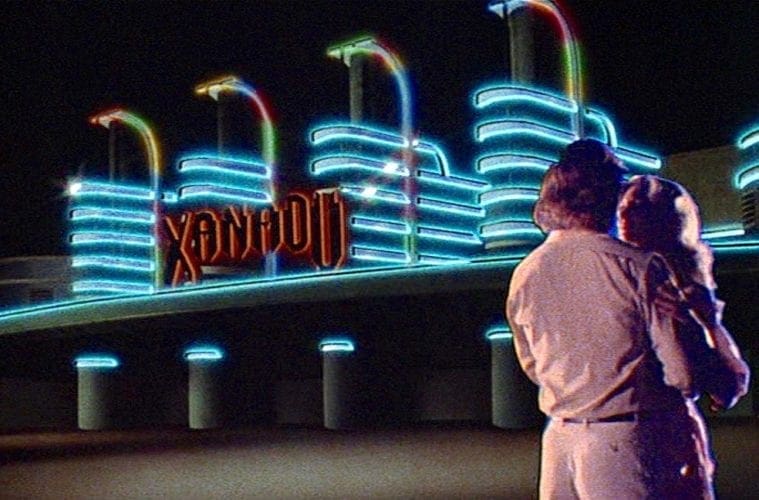
WHAT IS XANADU?
Xanadu is the name of the summer paradise created by Kubla Khan. The Emperor of China and ruler of Mongol created a beautiful, mobile paradise that he used for his summer home. Its existence is known because of the writings of Marco Polo, who is believed to have visited it. The new nightclub is named after the paradise, and Kira and Danny quote the famous poem by Samuel Taylor Coleridge:
In Xanadu did Kubla Khan
A stately pleasure-dome decree :
Where Alph, the sacred river, ran
Through caverns measureless to man
Down to a sunless sea.
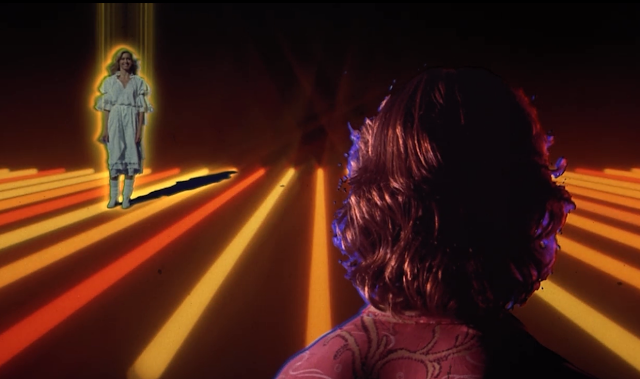
SCRIPT? WHAT SCRIPT?
Richard Danus worked with Joel Silver to rewrite the script. After getting Universal and Olivia Newton-John on board, focus turned to the script. Lawrence Gordon hired Danus who met with Silver on a daily basis. Danus said they'd meet in the producer's apartment and "battered the idea around" on a daily basis until they came up with a new direction for the film.
Danus and Silver turned the Venice Beach roller-skating romance into a fantasy. And yet, the script was only 45 pages long. Danus was asked to rewrite it. And rewrite it. And rewrite it.
More writers were brought on to doctor the script. Michael Kane, fresh off the Dom DeLuise comedy Hot Stuff, is credited on the third draft [Kane went on to write All the Right Moves]. Lyle Kessler, who went on to write the critically acclaimed play turned movie Orphans also took a crack at it.
There was no script. Everyone including the talent signed on to an outline or a script that looked like it was more of a summary of how the film would unfold. Entertainment Weekly asked director Robert Greenwald about the script being rewritten on the hoof, he replied, ”I wish it was being rewritten on the hoof. It was being written on the hoof! In my enthusiasm for the idea of doing a musical, I signed on before there was really any kind of script.”
Working with constantly changing dialogue was frustrating for the actors. "Half a dozen writers were hired and fired and brought in to so-call 'fix the script,'" Michael Beck said to USA Today. "So it was difficult from an acting point of view, and I was a fairly young actor then. I would get revisions that had nothing to do with the story that I thought I was filming. And I would go, 'Well, what am I supposed to be doing now?'
With no script, the dance numbers were a little nonsensical. “You were not quite sure why you were doing what you were doing,” choreographer Kenny Ortega told EW. “You know, it’s kind of nice to know what’s taking you into a musical number and why you’re coming out of it.”
Joel Silver MAY HAVE locked writers in a room until they had a coherent script. A long-standing rumor printed in a 1979 issue of Premiere Magazine states in his aggravation, the producer physically forced some kind of script out of the stream of writers hired. This gave rise to the idea that the vehicle was having some issues.
A TRIBUTE TO OLD HOLLYWOOD: LOOK FOR THE EASTER EGGS
Xanadu is a tribute to the Rita Hayworth musical, Down to Earth. Producer Joel Silver had a fantasy: to make a disco version of the Rita Hayworth movie. She plays a muse who comes to Earth to help a Broadway producer fix his play where she’s a character. Gordon told Entertainment Weekly: ”You have to understand that Joel loves musicals,” explains Gordon. ”I think when he came [to L.A.], he was more familiar with musicals than action films.”
In Down to Earth, Hayworth plays the muse Terpsichord. In Xanadu, Terpsichord is called "Kira," for short. At one point, Olivia Newton-John starts to say her character's full name and is cut off... "Terp --!"
Down to Earth is a sequel to the 1941 classic Here Comes Mr. Jordan. Some of the same actors and characters were in the second film.
Here Comes Mr. Jordan was in the news at the time Xanadu was being written. Warren Beatty directed and starred in a remake of Here Comes Mr. Jordan. Retitled Heaven Can Wait and co-starring Dyan Cannon and Charles Grodin, the remake was a huge success, coming out in 1978 – the year before Xanadu started filming.
Danny McGuire was the name of another Gene Kelly character. In Xanadu, McGuire is a former Big Band leader who reflects on his days in the mid ‘40s with his muse with whom he made beautiful music: singing, dancing, and loving. Danny McGuire, also the name of his character from the 1944 musical Cover Girl where he is in love with the actresses he’s mentoring, who is played by …. Rita Hayworth.
Danny tells Sonny, “The show must go on…” is a wink at his previous film. It's the title of a song from Cover Girl.
Danny and Kira do a ghostly dance that's very familiar. The dance to "Whenever You're Away from Me" is similar to the choreographed number he does with Judy Garland in For Me and My Gal (1942).
THE MUSIC
Jeff Lynne from Electric Light Orchestra was hired to do the soundtrack. At the time, ELO was at the height of their popularity with “Don’t Bring Me Down” dominating the airwaves. Lynne repurposed unused music by ELO and wrote lyrics to fit the movie. Lynne said yes based on his desire to work with Olivia Newton-John. Similarly, the promise of his involvement encouraged Olivia Newton-John to then be part of it, as she’d had success with the Grease soundtrack and she said Xanadu was pitched to her with the promise to “feature fantastic music.”
John Farrar was hired to write music for Xanadu at the request of Olivia Newton-John. Farrar was the singer’s longtime friend, writing and producing collaborator and best friend’s husband. He wrote “Magic,” “Suddenly,” “Suspended in Time,” “Dancin’” and “Whenever You’re Away from Me.”
The soundtrack was a hit machine. The Xanadu Soundtrack album hit No. 1 all over the world. “Magic” hit No. 1 on the U.S. charts. “Xanadu,” the collaboration between Newton-John and ELO, hit No. 1 in the U.K. Other songs that charted include “Suddenly,”
One single offered a dream opportunity for Olivia Newton-John to thank her mentor. That’s not Michael Beck singing “Suddenly,” but rather, Sir Cliff Richard. Richard had given Newton-John one of her first big breaks – she was his backup singer and when he noticed how much attention she garnered in the background, he brought her up front and sang duets with her. He’d also hired her to be on his British TV series, “The Cliff Richard Show.” Cliff Richard was considered England’s Elvis – he remains the third best-selling music artist after The Beatles and Elvis. Newton-John wrote, “After Cliff had been so wonderful to me early in my career by introducing me to English audiences, I had the opportunity to return the favor, which was wonderful.”
Jeff Lynne found the experience to be a challenge in an unexpected way. The ELO frontman seemed to be putting a positive spin on the experience in a promotional interview. He said when an artist is recording for his own album, the artist can make changes at anytime to the music he’s written until it’s recorded and is only finished once he decides it’s complete. However, he said writing for film that he must decide prior to recording what the complete sound is – no changes. “I have to commit myself totally to whatever I record, and say that’s it,” Lynne said. “It’s a very restricting thing, and it gives you a discipline, that’s an amazing thing, a marvelous thing.”
Jeff Lynne’s score was scrapped. Director Greenwald was reportedly unhappy with Lynne’s music. First, he insisted all of Lynne's singles be rerecorded with ELO and the decision was to then use the band to promote the movie, instead of just using Lynne. Then, Barry DeVerizon (“Nadia’s Theme”) created an a new score.
A BROKEN BOOTY
Olivia Newton-John cracked her tailbone during a rehearsal. During a rehearsal for “Suddenly,” the singer fell on the concrete floor…hard. She insisted she needed only a moment and then she’d finish the scene, but instead, was rushed to the emergency room at Cedars-Sinai Medical Center. ”It was very painful,” she remembers. ”But the show must go on, right?”
Despite doctor’s orders to rest for a few weeks, Newton-John insisted they continue filming – and they had yet to film any of the roller skating scenes. She refused a stunt double, saying she was in a great deal of pain, but “this broken muse just shut up and gritted her teeth.” She wrote her pain stayed with her long after Xanadu was wrapped.
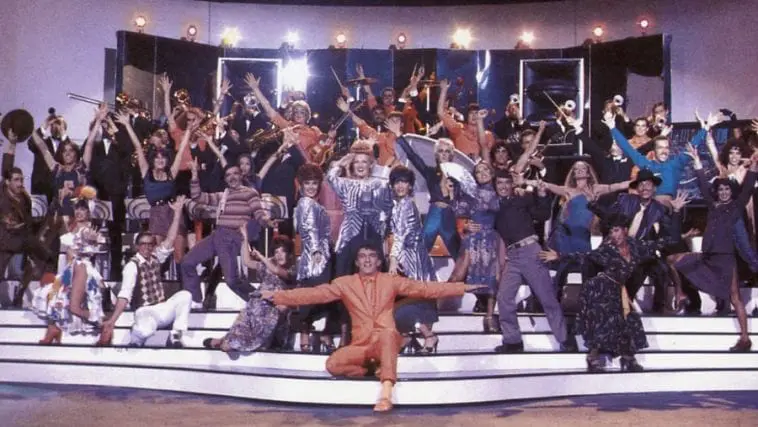
A BIG BUDGET DOES NOT ALWAYS BREED A BLOCKBUSTER
Xanadu was designed to be a complete original. Robert Greenwald and Kenny Ortega set out to create something completely new, being sure it didn’t look like any other movie ever made. On the other hand, Greenwald had to be sure it wasn’t too out there. “Fortunately, the rules of this movie were so flexible, you could do a huge amount of possibilities.”
The tight-rope walkers are actually up pretty high. Kenny Ortega designed the scene for the man and woman walking above the tightrope to kiss. The physical contact made it a much more complicated and dangerous moment for the duo. Albie Selznick, the man on the rope, said when he saw the movie for the first time, he was shocked to see the shot was so tight, it's impossible to tell how high the wire is from the ground. “We really could have been [just] a foot off the ground and it would’ve saved me a bunch of tension and anxiety!” he said.
Gene Kelly aside, Xanadu was a young set. With most people signed on when it was a low budget indie, it was talent who were at the beginning of their careers. With so many young dancers filling in the environment around the three key players, Olivia Newton-John said at the time, “I think what I’m enjoying is the atmosphere of the set. There are a lot of young people here, and the music is good – the energy is great.” Gene Kelly said, “we dance and sing and make jokes!”
The budget just kept ballooning until it reached an unheard of reported $20 million. Originally planned as a low-budget indie, the budget increased once one of the biggest stars on the planet – Olivia Newton-John – agreed to do the film as her follow up to Grease. Then, silver screen dance legend Gene Kelly agreed to be her co-star, and doing a small film was no longer in the cards. Kenny Ortega said the filmmakers just kept adding to the movie - sets, dancers, wardrobe - until they ran out of money. [In an angry moment, Larry Gordon said the budget did not reach $20 million, but did not provide a corrected number.]
The budget was so overblown that Universal fired Joel Silver, who then went around the studio to get rehired. Silver wasn't going to be step away from his musical fantasy. Lawrence Gordon rehired Silver as a consulting producer, so he he boom, was back on the picture. Silver wasn't fired just because of the ballooning budget: Silver had spent thousands of dollars decorating his office with art deco furniture and spent $10,000 of their money throwing himself a birthday party.
WHAT'S UP WITH THE WEIRD ANIMATION SEQUENCE?
Producers realized they needed to fit in one more song. The film had wrapped when Joel Silver realized they were contractually obligated to include all of the ELO songs written for the film. The contract with Jeff Lynne stated that if the filmmakers didn’t use all of the songs, then they couldn’t use any of them.
Nothing had been shot that fit “Don’t Walk Away.” But, producer Silver had an idea. Using an editor’s Moviola, he ran a sequence of Disney’s Alice in Wonderland (1951) to the song. Not that it made any sense, but he thought it could be an idea for how to make the song work in the film.
A Disney animator was suddenly available. Don Bluth, an animator who directed Winnie the Pooh and Tigger Too (1974), The Rescuers (1977) and Pete’s Dragon (1977) for Disney had recently left the Mouse House. It was a bit of a kerfluffle that industryites were aware of: Disney Animation hadn’t been hitting it out of the park since Walt’s death, and rumors persisted they were going to shut down the production unit.
Bluth had just opened the doors to his own production company and was hired to do the short. Bluth storyboarded up the scene with a simple story of a boy and girl turning into various creatures. Joel Silver gave him the greenlight.
However, Bluth’s brand new company was already committed to another feature-length film: The Secret of NIMH. The new company needed to build up clients and a resume of its own, but they were already booked solid.
Cartoon Sonny Malone is actually Kenny Ortega. Olivia Newton-John was called back for the sequence, along with other reshoots, in March 1980. Ortega choreographed the scene and animators filmed he and Newton-John’s physical movements as a template for their hand-drawn work.
Animators were working 24/7 at Don Bluth’s house. To accommodate the tight deadline for Xanadu while keeping Secret of NIMH on schedule, additional animators were hired and worked tirelessly. A cook was hired to prepare meals around the clock.
Don Bluth felt he would be laughed at. Bluth recounted a story in the “Going Back to Xanadu” documentary where he saw it in the theater and as his scene approached, he was filled with a sense of dread and worry. He was relieved when nobody was laughing, but rather, audiences seemed to be enjoying his animated scene.
The animated sequence was the most successful at the New York premiere. Joel Silver called Bluth to tell him that audiences went wild for the cartoon interstitial.
KEY LOCATIONS
The colorful pop-artacular Fiorucci boutique wasn’t “transformed:” that’s how it was all the time! Gene Kelly described Fiorucci’s as a “wild” store that “sells out of the way and up to date and offbeat costumes.” The building was iconic as Beverly Hills first movie theater, the Beverly Theater. Then, after complaints from residents about the noise and traffic the theater brought, it was converted into a Fiorucci boutique,
Xanadu is the Pan-Pacific Auditorium. The auditorium really was abandoned, just like in the film, although conservation groups were trying desperately to save the historic building that lauded “Streamline Moderne” design. Sonny says “they used to hold wrestling matches here.” And, they did! He also calls it “a dump” … and, unfortunately, at that point it was. The space was only used for the exterior shots. The interior was on a Hollywood sound stage. The Pan-Pacific burned to the ground in a fire in 1989. Pan-Pacific Park now resides it its place with a single tower reminiscent of its original design, located at 7600 Beverly Blvd, caddy-corner from The Grove.
The muse mural was actually on the Venice Boardwalk. However, it was a facade to make it look it was the wall of an existing building when really, a fake one was constructed to dead end a street.
Kira kisses Sonny in Santa Monica’s Palisades Park. The sidewalk overlooks the beach, high above the ocean. However, Danny Maguire was not playing the sax just below that area: that's Malibu: the oft-shot Leo Carillo State Beach (same place as the beach scene in The Karate Kid).
Sonny drives the bike off the Malibu Pier. While the other locations do tend to make sense for the story, Malibu is a pretty long distance for Kira to have skated without Sonny catching up on a motorbike. Although, that concrete boardwalk does extend the entire way and is popular with cyclists.
The Platinum Palace no longer exists. The record store that was based on Tower Records (which also no longer exists) was located in Burbank. An apartment building is now in the space.

WARDROBE
Wardrobe stylist Bobbie Mannix created the spandex and legwarmers look. We brought that into the early ‘80s: the spandex, the legwarmers, as a result of Xanadu,” Mannix said in the "Going Back to Xanadu" documentary. “Then, they caught on wildfire after that – and legwarmers were the thing.”
Legwarmers might have utilized as a fashion accessory to hide Olivia Newton-John’s ankles. Legwarmers have been around for a while, used by ballet dancers to keep their legs warm (obviously) while resting. Xanadu brought the functional accessory into the mainstream. There’s an ugly and unsubstantiated rumor that Mannix put ONJ in legwarmer as a way to hide ONJ’s ankles.
What’s up with the Zoot Suits? So, there was actually a resurgence in wearing zoot suits in the ‘80s – and yes, it was break dancers who were wearing them. So, it was the ideal style choice to meld together for the '40s meets '80s film. OF course, the zoot suits had a modern touch: the buttons on the dancers shirt are off center. So ‘80s.
Xanadu shows the fashions of the moment. Kira's cowboy hat, fringe jacket, and thigh-high cowboy boots became all the rage after Urban Cowboy came out, two months before Xanadu, and starring Newton-John's Grease buddy John Travolta. Other popular looks include Kira’s Missoni harem pants, the bohemian angel on wheels, tiger print rocker, and the futuristic look with bright makeup.
A DANCE NUMBER THAT GOES BACK TO THE FUTURE
The film’s biggest feat was melding two decades. The 1940s meets the 1980s in music, dance, and style in a dance number that still astounds.
The Tubes recorded their song without any understanding of how it would be used. “We didn’t really realize how the music fit together and synced up,” Fee Waybill said. “When the two stages merged together and fit into one stage, it was amazing.”
The dancing groups were meant to be strangers to each other. Kenny Ortega choreographed the ‘40s group and Russell Clarke designed the ‘80s dance. The two sets of dancers were intentionally kept apart so that when they filmed, the dancers would react with surprise.
The choreography was one thing. The direction and photography to best show off the choreography presented an even greater challenge. “We’ve had two choreographers and two composers. So, just the coordination has been an opera and a musical, of itself, trying to keep it straight,” said Robert Greenwald, who explained that he and director of photography Victor Kemper would come in and watch rehearsals, and figure out how the two pieces will work together and on film, asking the choreographers to go back and make adjustments.
Not everyone was a fan. Roger Ebert wrote: "When Beck and Kelly visit the empty amphitheater, Kelly envisions a '40s band in one corner and an '80s rock group in another. The movie gives us one of each: Andrews Sisters clones in close harmony, and the Electric Light Orchestra in full explosion. Then the two bandstands are moved together so they blend and everyone is on one bandstand, singing one song. It's a great idea, but the way this movie handles it, it's an incomprehensible traffic jam with dozens of superfluous performers milling about."
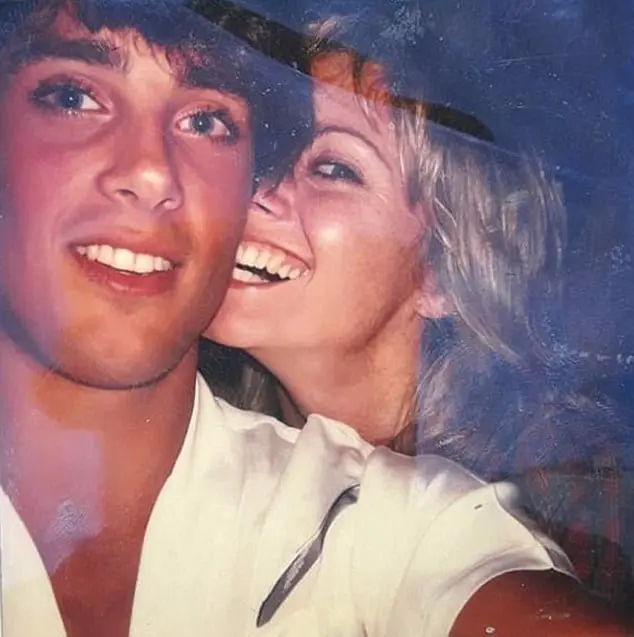
THE LOVE STORY INSIDE THE LOVE STORY
Olivia Newton-John met a young dancer on set. Michael Beck was the last person to be cast. With so many dance sequences, rehearsals needed to begin even though the lead actor wasn't yet decided upon. Matt Lattanzi was selected to rehearse with Newton-John, which gave them two weeks to work on the dances...alone.
Lattanzi plays the young Danny McGuire in the film. Gene Kelly called Lattanzi “Valentino.” He was referencing the original movie heartthrob, Rudolph Valentino. Kelly actually knew Rudy Valentino! And, Xanadu’s Valentino stole the lead actress' heart.
Newton-John and Lattanzi fell in love. Their set romance turned serious during the last months of filming. Their first kiss was at Will Rogers State Park. ONJ tried to keep it quiet - one of her concerns was the press would obsess about their age difference: the singer is 11 years older than her man. She was 32, he was 20.
Lattanzi would hide from the crew in Newton-John’s hotel cabinets. Olivia wrote that Lattanzi would spend the night in her hotel room. When the hair and makeup team would arrive super early in the morning, he’s sleep in the cupboard with a pillow and blanket so no one would see him.
Oliva Newton-John and Matt Lattanzi were married in 1984. They had a daughter, Chloe, and divorced in 1995.
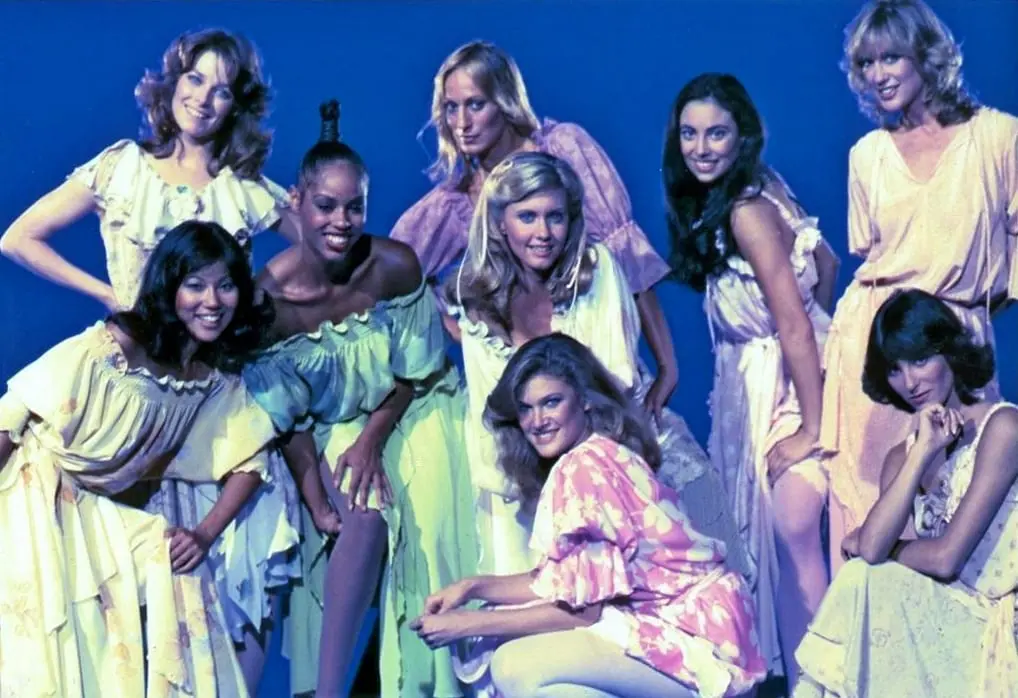
FUN FACTS
One of the muses became a famous warrior. Dancer Sandahl Bergman (pictured above, that's her above Olivia Newton-John) was fresh off All that Jazz when she was cast. She went on to fame playing opposite Arnold Schwarzenegger in Conan the Barbarian and Red Sonja.
Bergman was evicted from her New York apartment because she took the Xanadu gig. Wikipedia reports: “She had been subletting her apartment in New York in defiance of a clause in her agreement with her landlord, and during her four months in California for filming, he became aware of the situation.” Knowing she didn’t have a home to go back to and couldn’t back in time, Bergman just never returned to New York, having friends empty her apartment and ship her stuff to her in Los Angeles.
Olivia Newton-John had to take tap dancing lessons for three months. Prior to filming, the singer was put into tap classes and once she’d achieved that level, had three weeks to learn the choreography to tap dance next to the world’s best dancer, Gene Kelly.
Gene Kelly kept having to reskate through the scene with the jugglers. Kelly roller skates through two lines of jugglers passing bowling pins to each other. Kelly, of course, was flawless. The jugglers were great, too, but with so many, one person kept dropping a pin and they’d have to start from the top.
Oliva Newton-John sat on an iced donut cushion in between takes. After breaking her tailbone during a roller skating choreography rehearsal for Suddenly, she was in pain for the rest of the shoot. “That’s my memory of that song, as beautiful as it is, I remember the between shots!” she said.
Joe Mantegna had a role in the film, but all of his scenes were cut. At the time, the actor was a David Mamet favorite on the stage and had just moved to California, trying to transition to film and TV. His biggest role prior to Xanadu was a supporting role in the TV Movie “Elvis.” Mantegna told The A.V. Club, "There was a scene where [Sonny] was looking at some people putting posters on a wall or something, and I happen to be standing there. “Guy Who Comments On Posters” would probably be my credit. And I think he walks up to me and says, “What’s going on?” and I say “Ba ba ba ba ba ba ba ba ba ba, ba ba ba ” and that was it. I said maybe two lines. It was enough to qualify myself for a little unemployment that year in California, so it was well worth it. I probably made $200. Whatever. I had been doing theater for almost 15 years in Chicago, but coming out here to California was starting over, so it was one of those things—you go out to an audition and they say “Yeah, you could be the third guy on the left and say this line,” and that was that."
Oliva Newton-John loved a tiny detail in the animation sequence. The singer wrote that she always loved that when Kira was a cartoon bird, she wore tiny leg warmers the same color as the ones she wore in the live-action parts of the film.
There’s a good reason Kira skates into Sonny, kisses him, and skates off. Sonny was “kissed by a muse,” which is normally a figurative term which means to receive a flash of inspiration.
Sonny and Kira’s kisses lack passion, for good reason. Not only was Olivia Newton-John busy falling in love with another guy in the production, Michael Beck was very recently engaged. Both were in love with other people.
Xanadu is NOT the first time Gene Kelly roller skates in film. The dancer also roller skates in It’s Always Fair Weather (1955). His costar in that film was Michael Kidd: Robert Greenwald’s uncle and Jerry Trent's mentor.
The Tubes wore the orange jumpsuits from Dancin' on tour. The jumpsuits were created by stylist Bobbie Mannix were intended to pop against the dancers from the ‘80s and ‘40s. “I know we wore those jumpsuits for the next few years,” Fee Waybill said. “I remember the nylon jumpsuits in Europe – and how hot they were!”
Xanadu has aired on broadcast TV only one time. CBS aired the film on May 26, 1984. While Xanadu has run on cable and found itself in theaters for midnight screenings, it has never again aired one of the major broadcast network.
UNIVERSAL LAUNCHED AN UNPRECEDENTED NEXT-LEVEL MARKETING BLITZ
"Making Xanadu" (above). Olivia Newton-John's production company produced this 23-minute promotional documentary that aired as a TV special. The cinematographer, László Kovács, was no slouch: he was the Director of Photography on Easy Rider (1969), Five Easy Pieces (1970), and Close Encounters of the Third Kind (1977). MCA Records president Bob Singer boasted that by the time Xanadu came out, everyone in America would have heard the name six to eight times. One studio head boldly pronounced, "We all know that Saturday Night Fever and Grease saved our business in 1978, and Xanadu will save it in 1980."
"Olivia Newton-John: Hollywood Nights" aired before the 1980 Oscar telecast. Newton-John's manager Lee Kramer persuaded ABC to run the music special which featured duets with singers like Karen Carpenter, Elton John, Tina Turner and Andy Gibb, to run before the 52nd Annual Academy Awards. Alan Thicke was a writer-producer. Julie Brown and Charlie Coffey were writers (the duo would go on to make Earth Girls are Easy starring a young Jim Carrey).
Olivia Newton-John sang almost all the songs from Xanadu on "The Midnight Special." For "Dancin'," The Tubes performed (so they at least performed the song one more time) while Newton-John was taped in three different 1940s looks and edited so that she is performing the song as a "trio."
A Xanadu clothing line was placed in department stores. As part of the marketing plan, Xanadu boutiques were opened within department stores with replicas to the bohemian dresses the muses wore.
UH-OH. DISCO WAS DEAD.
A disco backlash started to take steam around the time that filming began on Xanadu. As much as execs tried to speed up production to get Xanadu to market to capitalize on the roller disco trend, it was waning by August of 1980.
A disco demolition was held by a radio station DJ during a baseball game. In the summer of 1979, a disgruntled Chicago DJ invited fans to a White Sox game to destroy their disco albums and declare the genre dead. The event got notoriously out of hand, and 10,000 disco albums were blown up by explosives.
Skatetown, USA (with the film debut of Patrick Swayze) and Roller Boogie (with Exorcist star Linda Blair) both came out in 1979 and weren't particularly successful. Those film's lack of success critically and financially was a damper on Xanadu, which started marketing itself as a timeless romance and not mentioning the roller skates. Additionally, the trailer mentions ELO but doesn't play their music. (see above).
REVIEWS: XANA-DON'T
There wasn't one good review.
Esquire Magazine's one-word headline - “Xana-don’t" - continues to haunt the film. But other reviews were no more flattering:
Roger Ebert: “Mushy and limp”
Variety: "Stupendously bad"
The London Evening News: "the most dreadful, tasteless movie of the decade. Indeed, of all time."
The Hollywood Reporter: "it's neither the film its producer hoped it would be nor is it the artistic write-off the rumor mill has labeled it."
Xanadu inspired the Razzies. The Golden Raspberry Awards were created after its founder watched a double feature of Xanadu and Can't Stop the Music and was outraged he was denied a refund.
Most of the above line talent has hung their head in shame.
Gene Kelly wrote in his autobiography: “I have to admit, it is a terrible movie”, he writes, “The film coasts too much simply because they didn’t know how to proceed along the economic lines. It could have been made in a third of the cost. But I must say it was fun working with Olivia, for that reason alone, I don’t regret the experience....and it’s the last time you’ll see me dancing in a movie. So in that respect, I guess Xanadu occupies a special place in my career. But only in that respect I hasten to add.”
”The film was a disaster,” Michael Cotten, a member of rock band the Tubes, said to EW. ”I wasn’t surprised how bad the reviews were, because mostly I agreed. It was just a train wreck — a big, giant, colorful train wreck.”
Also happy to diss the film after the fact was Jeff Lynne. “I wrote half the songs, though I’ve never seen the thing. I don’t suppose anybody else has, either. It was supposed to be really bad. I don’t think I’ll ever see the movie after reading the reviews.”
And yet, there’s something about it…
An audience appreciated it. They just didn't have a voice yet. It’s no coincidence that Xanadu’s achieved cult status from a fanbase not coming from adults, but from those who were kids at the time. The film transported them to a place where dreams come true, where true love can be found and overcome all odds, and the music is heaven.
Audiences always think a movie is better than it actually was if it ends on an uplifting, rousing song. That final sequence to the ELO-ONJ song "Xanadu," as stated by Sarah Hepola in Austin’s The Morning News, “is just a metaphor for what music does in our lives. Just a few well-chosen notes and we can plummet through the trapdoor, find ourselves in another world entirely. Back in childhood, back in love.”
The music of Xanadu, however, written by two of the era’s most successful but diverse hitmakers, is so good that every few minutes, the audience is transported. In pre-MTV times, the entire movie is basically a long-form music video – the kids who saw Xanadu turned around and became the kids who would watch and rewatch music videos over and over on the first 24 hour music video channel. ELO and Farrar wrote songs that were both energizing and hopeful, that screamed “you can achieve anything” – which was not the thinking of the time and certainly NOT what pragmatic parents were telling their children in 1980. (Perhaps Xanadu is why parents of the ‘90s did start giving that encouraging advice to their kids.)
Even the Razzie co-founder acknowledges it has a certain something. "The key to Xanadu is, it was enjoyable in a way that was not intended," says Golden Raspberry Awards co-founder Mo Murphy said to The Hollywood Reporter. "It was a failure as a film but not necessarily as entertainment."
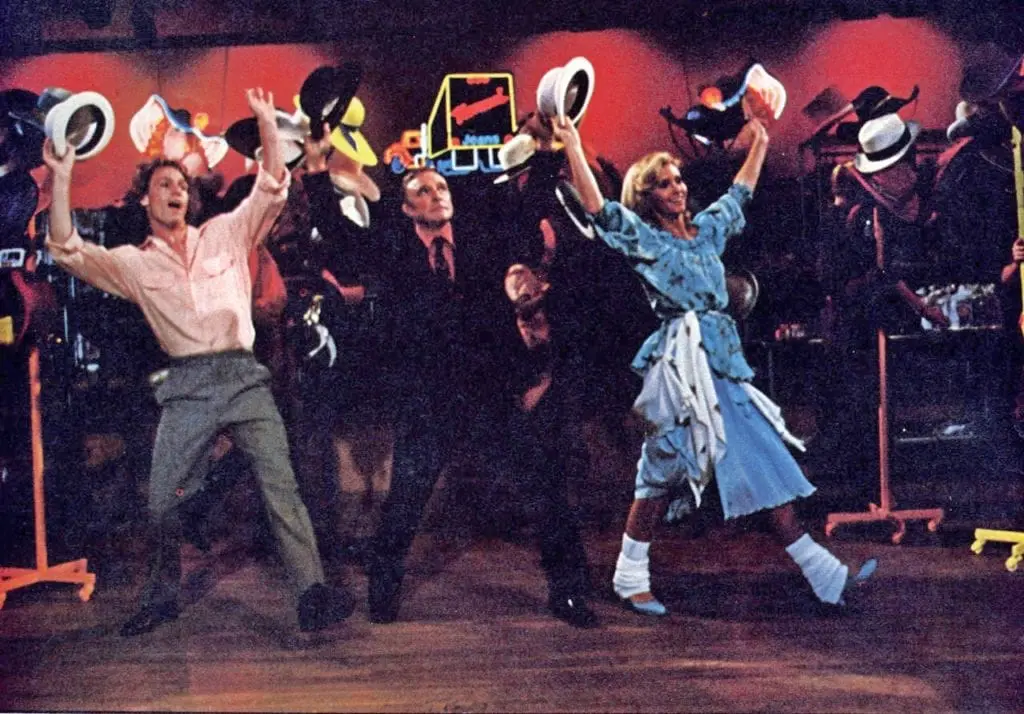
AND YET, THERE'S SOMETHING "MAGICAL" ABOUT IT...
An audience appreciated it. They just didn't have a voice yet. It’s no coincidence that Xanadu’s achieved cult status from a fanbase not coming from adults, but from those who were kids at the time. The film transported them to a place where dreams come true, where true love can be found and overcome all odds, and the music is heaven.
Audiences always think a movie is better than it actually was if it ends on an uplifting, rousing song. That final sequence to the ELO-ONJ song "Xanadu," as stated by Sarah Hepola in Austin’s The Morning News, “is just a metaphor for what music does in our lives. Just a few well-chosen notes and we can plummet through the trapdoor, find ourselves in another world entirely. Back in childhood, back in love.”
The music of Xanadu is written by two of the era’s most successful but diverse hitmakers, and it is so good that every few minutes, the audience is transported. In pre-MTV times, the entire movie is basically a long-form music video – the kids who saw Xanadu turned around and became the kids who would watch and rewatch music videos over and over on the first 24 hour music video channel. ELO and Farrar wrote songs that were both energizing and hopeful, that screamed “you can achieve anything” – which was not the thinking of the time and certainly NOT what pragmatic parents were telling their children in 1980. (Perhaps Xanadu is why parents of the ‘90s did start giving that encouraging advice to their kids.)
Even the Razzie co-founder acknowledges it has a certain something. "The key to Xanadu is, it was enjoyable in a way that was not intended," says Golden Raspberry Awards co-founder Mo Murphy said to The Hollywood Reporter. "It was a failure as a film but not necessarily as entertainment."
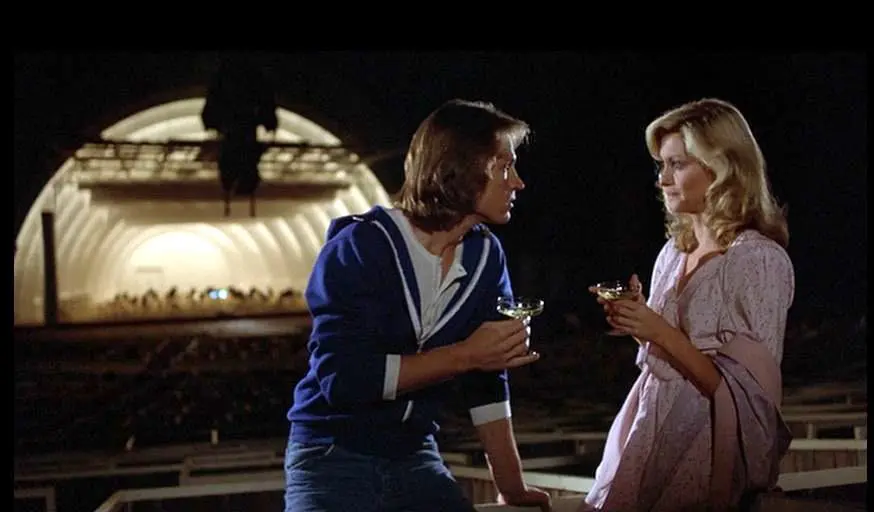
DELETED SCENES
The Hollywood Bowl. The production shot for three days at the Hollywood Bowl where Kira and Sonny sip champagne.
Gene Kelly’s roller skating dance sequence. Kelly’s roller skating around Xanadu is included in the film, but his choreography was much more elaborate and longer. Kelly was upset about that, and complained to Director of Photography Vic Kemper that the atmosphere on the set was “every man for himself.”
"Suspended in Time" was reshot. In the "Making Xandau" documentary (see above video under "Marketing") around the 6:00 mark, they show camera filming Kira singing the song to Sonny in the empty club, both of them upset and perplexed about their relationship's impending doom. This was reshot with Kira singing this song in the void, lit up with a neon aura. The song serves as her persuasive argument to her parents, Zeus and Hera, to allow her to stay on Earth.
The original ending was changed. "Making Xanadu" documentary also shows the original final scene. Sandra (Katie Hanley) introduces Sonny to a friend of hers who is dancing with Danny. It's Kira. [Can we just say that the way Kira appears in everyone's life, this seems like a better ending!]

LEGACY
It was a career killer. Michael Beck never did a feature film again. It cooled the red-hot acting career of Newton-John. Marc Rubel, whose original script was long gone, but whose name remained on the famous flop, says his career suffered. And, it killed the musical movie (again).
It inspired a mentally-unwell killer. In 1983, Michael Owen Perry – who had escaped a mental institution and was living in a trailer behind his parents home in Port Arthur, La., believed Newton-John truly was a Greek muse communicating to him through the movie. He went on a killing spree, murdering his parents, two of his cousins and his 2-year-old nephew. He left behind a kill list that included the name Olivia. Police went on a nationwide manhunt and apprehended him. Newton-John left America for a while.
The gay community has embraced it. Outfest, a gay and lesbian film festival, put on a singalong screening of Xanadu in a 1,200-person venue: it sold out.
It’s one of the most beloved So Bad It’s Good Movies. Producer Lawrence Gordon told EW, “I like this movie. I can’t tell you how many people — girls especially — love Xanadu. They come in my office, they see the one-sheet and they go, ‘Oh my God, I love that.’ Is it a good or bad movie? How do you judge that crap?”
It's one of the most famous flops – but did it really flop? The film was supposed to be put into wide release, about 900 theaters. However, the distributor changed course without much notice to the filmmakers that it was going to open in only 249 theaters, giving it a dire opening weekend box office numbers. That sounds shocking now, but in the ‘70s and ‘80s, the distribution model was different. As costly prints had to be ordered, films would often open in key markets and then physically move the prints around the country.
It brought Gene Kelly back into the minds of the filmmaking community. While Xanadu was ridiculed, the awards shows didn't totally ignore it. In 1981, the Golden Globes recognized Kelly with a Lifetime Achievement Award and France put on a two-week film festival of Kelly's films. In the following years, Kelly was awarded for lifetime achievement by the American Film Institute, the Screen Actors Guild, and the Kennedy Center Honors.
Gene Kelly mentored Kenny Ortega for the next 23 years. Gene Kelly “broke down all of his films, and taught me his art of designing choreographer for the camera, and became my choreographer and friend until his passing,” Ortega said.
Raison d’etre is not raisin bread. Both Newton-John and Ortega said Kelly left them with advice that they’ve incorporated for their life. “Raison d’etre” means reason for being. In other words, every movement and action must have a reason. Ortega didn’t know French and spent a bit of time trying to figure out why Kelly told him about the importance of “raisin bread.”
Xanadu Live! Xanadu played Broadway with great success. Sitcom actress Amy Pietz (“Caroline in the City,” where her co-star was ‘80s icon Lea Thompson!) revived the musical with one key difference: it winks at what makes the original film so bad, it’s good – making it even better.
"Xanadu on Broadway" redeemed the film. In 2007, it was revived again, this time as an improvement on the film, and Xanadu on Broadway was a huge hit. To make it happen, the stage producers had to get the go ahead from Marc Rubel, Jeff Lynne. After seeing the theater production, Rubel said, “To have it be this [XoB] success feels great. Finally. It is redemption. Very rare. You just don’t get that with this business.”
Michael Beck said regardless of reviews, the movie has become a rewarding experience. “I've found through the years, people come up to you, and they tell you how much that movie meant to them, and how much they love it," Beck told USA Today. And anytime people share that with you, then you think, "Well, neat. I'm glad I had something to do with that."
What is it that makes Xanadu magic? "It was a very hopeful movie, I think," Olivia Newton-John said. "It was about following your dreams."
WHERE ARE THEY NOW?
Michael Beck, narrator. After the birth of his children, Michael Beck moved to Oregon to raise them in a more traditional environment. He has become a prolific book narrator for books on tape, narrating a majority of John Grisham novels and Bill Clinton’s autobiography. He says he can no longer roller skate.
Robert Greenwald, political documentarian. After learning of the voting disenfranchisement that occurred during the 2000 U.S. presidential election, Robert Greenwald changed his focus to making documentaries shedding light on injustices and corruption affecting the American people.
Olivia Newton-John has used her own battle with breast cancer to help others. The singer had one more studio film in her, Twist of Fate, which reteamed her with John Travolta; it was also considered a failure. However, her music career continued to soar. Her release of "Physical" changed her image and marked the biggest hit of her career. She opened a chain of Australian-themed boutiques, Koala Blue. She's had recurring battles with cancer that has led to the creation of the Olivia Newton-John Cancer Centre and the Olivia Newton-John Cancer Research Institute.
Kenny Ortega has become one of the most important and prominent choreographers of the modern day. From Dirty Dancing to Michael Jackson, Ortega is now synonymous with musicals and concert documentaries. He's moved on to directing (including Halloween-fave Hocus Pocus (1993)!) and helmed the entire High School Musical TV-film franchise.
Marc Rubel did big business with Big Business. The 1988 Bette Midler-Lily Tomlin starrer about two sets of twins in a city mouse-country mouse type of story was a box office hit. By looking at this Facebook page, it seems that Rubel has traded in writing for surfing.
Gene Kelly found love again. As stated above, Kelly retired from film to spend time with family after his wife's passing. He said yes to Xanadu because the location was close to home and the schedule was flexible. After Xanadu, he met Patricia Ward and they married in 1990. Their marriage endured for six years until the legend's passing.
The Xanadu wardrobe was auctioned off for charity in 2019. To raise money for the Olivia Newton-John Cancer Centre, the singer-actress put her most memorable costumes up for auction. The collection went for big bucks, and included Kira's thigh-high white cowboy boots (sold at $16,000), sequined holster ($7,500) and her Missoni harem pants ($19,200) from the Xanadu finale.
Soundtrack
While the film was a unmitigated bomb, the Xanadu Soundtrack was a worldwide success. Critically acclaimed, it went double platinum in the U.S., reached No. 1 in the U.K. and No. 5 in the U.S. "Magic" and "Xanadu" were also No. 1 hits. Each side was devoted to an artist: Side 1 were the songs bu Olivia Newton-John, Side 2 belonged to ELO.
Director: Robert Greenwald
Screenwriter: Richard Christian Danus and Marc Reid Rubel
Release Date: August 8, 1980
Rating: PG
Opening Weekend Rank: #3. At #1 was still Star Wars VII: The Empire Strikes Back, #2 was the other new release, the Peter Sellers comedy The Fiendish Plot of Dr. Fu Manchu
Opening Weekend Box Office: $1.5 million
Lifetime Gross: $22 .7 million
Budget: $20 million
Production Company: Universal Pictures
Distributor: Universal Pictures

